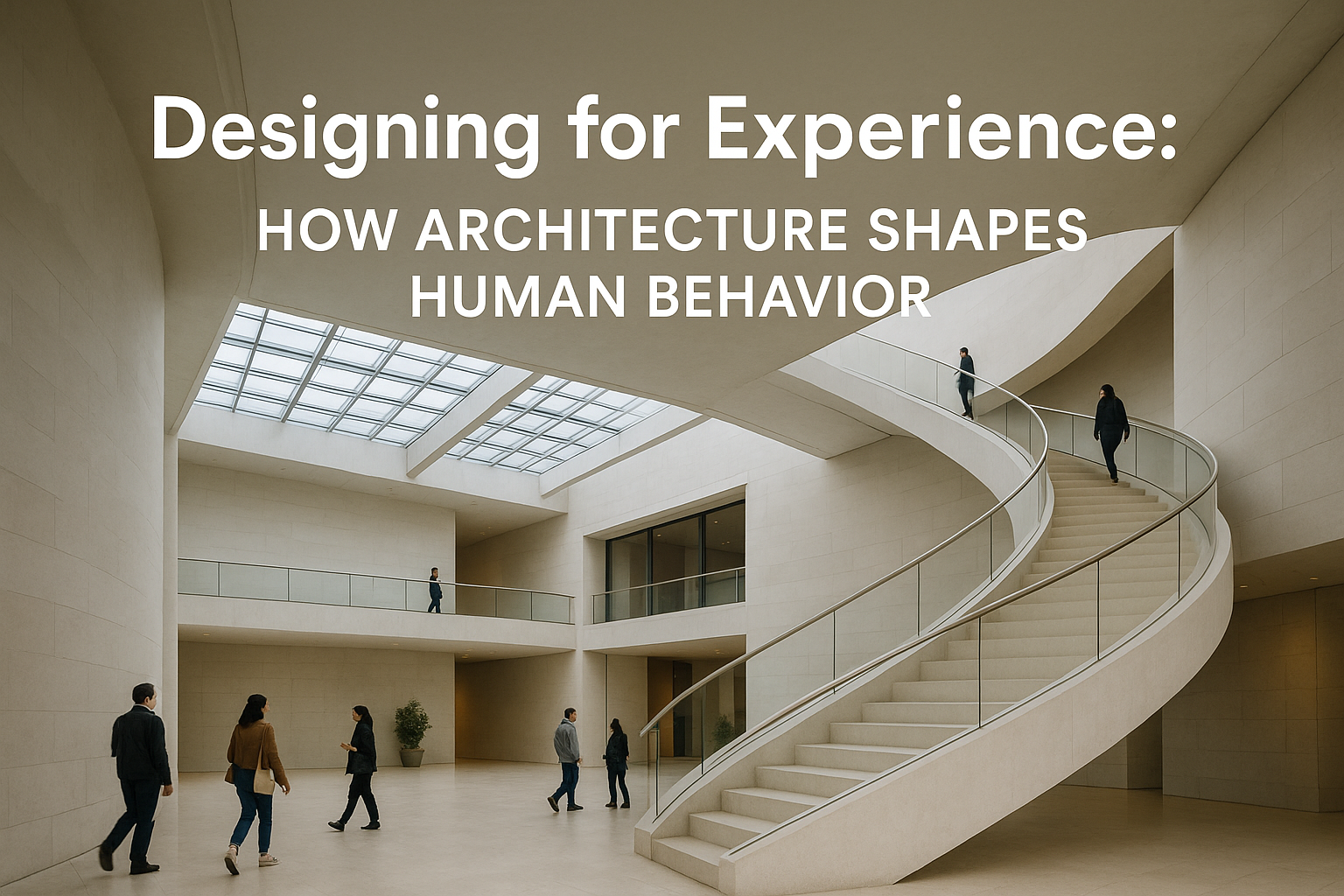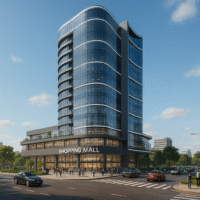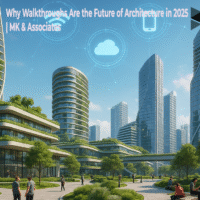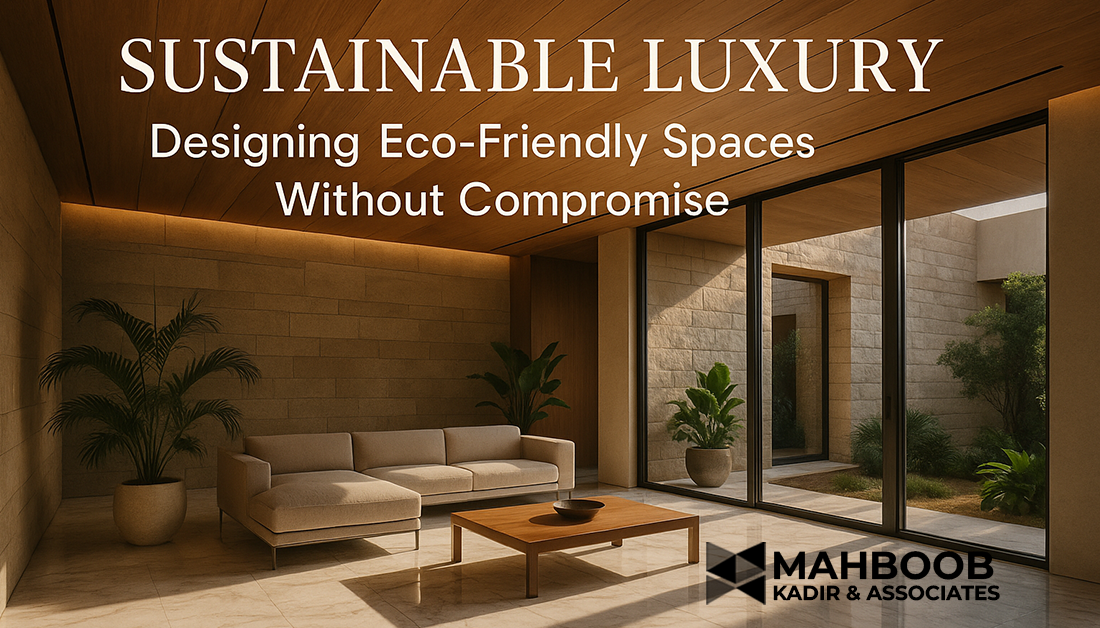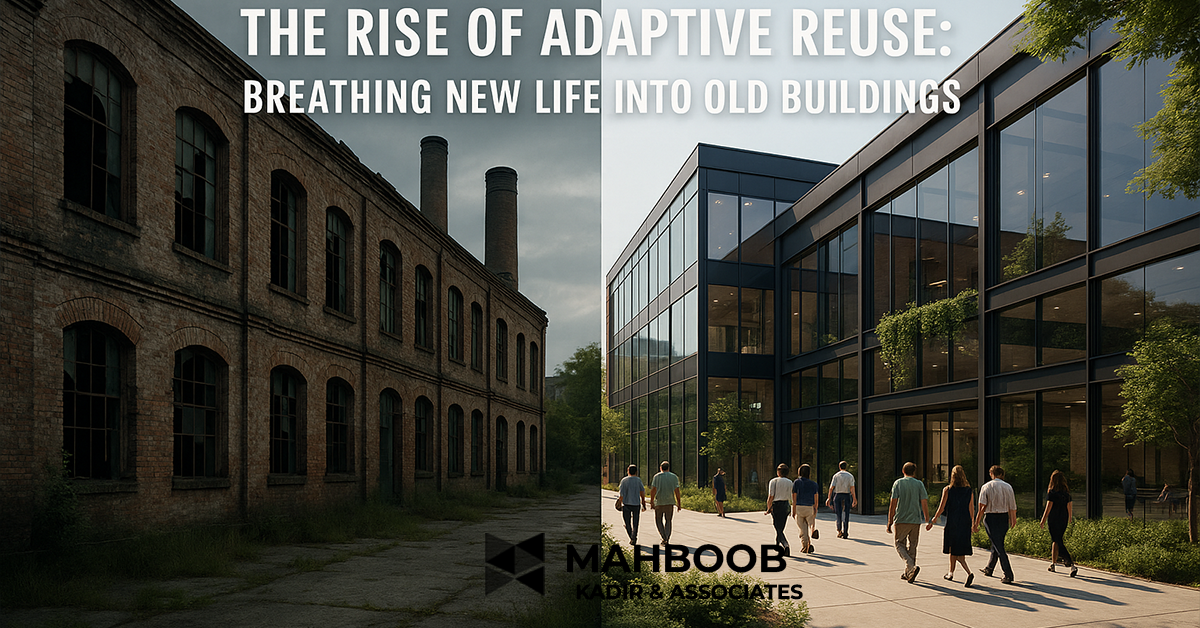Designing for Experience: How Architecture Shapes Human Behavior
Architecture has always been more than the creation of walls, roofs, and spaces. It is the art and science of shaping human experience. Every design decision—whether a building’s height, a window’s placement, or a pathway’s curve—affects the way people feel, move, and interact. In today’s rapidly evolving world, human-centered design and experiential architecture are not just trends; they are necessities that define the future of how we live, work, and connect.
In this blog, we will explore how architecture shapes human behavior and why modern architects are rethinking spaces to enhance well-being, foster creativity, and encourage social connection.
The Psychology of Space
Architecture has a profound psychological effect on people. Spatial design influences mood, productivity, and even mental health. Natural light reduces stress, open layouts encourage collaboration, and biophilic design—incorporating greenery and natural elements—creates a sense of calm and belonging.
This is where architectural psychology plays a key role. From schools that promote focus and learning to hospitals that encourage healing, spaces are designed today to reflect how humans respond emotionally and physically to their environment.
Human-Centered Design: Putting People First
The rise of human-centered design has revolutionized architecture. Instead of prioritizing only aesthetics or technical constraints, architects now consider how buildings make people feel and behave.
- In workplaces, design affects collaboration and innovation.
- In retail, layouts shape shopping behavior and spending patterns.
- In residential design, comfort, privacy, and community interaction become central.
By focusing on user experience in architecture, designers ensure spaces are intuitive, inclusive, and meaningful.
Experiential Architecture: Beyond Functionality
Experiential architecture is not about creating just buildings—it’s about creating memorable experiences. When someone enters a cultural landmark, a mall, or a corporate office, the design elements—light, sound, textures, and flow—collectively define how they perceive and remember that place.
For example:
- A museum designed with narrative spaces enhances storytelling.
- A shopping mall with dynamic circulation encourages exploration.
- A corporate office with flexible work zones fosters creativity and productivity.
Sustainable Design: Shaping Behavior Through Responsibility
Today, sustainable design is more than an environmental choice—it is shaping the way humans interact with architecture. Buildings that incorporate solar energy, rainwater harvesting, or natural ventilation educate and influence people toward eco-friendly lifestyles.
The presence of green roofs, vertical gardens, and passive cooling systems does more than save resources—it demonstrates how sustainability can become part of everyday life. This directly affects how communities value nature and long-term well-being.
Biophilic Design: Reconnecting People with Nature
Humans are naturally drawn to nature, a principle known as biophilia. Biophilic design brings greenery, water features, and natural materials into architectural spaces, influencing relaxation and reducing stress.
From glass façade architecture that allows maximum daylight to indoor gardens that promote wellness, these design choices affect how people interact with spaces and each other.
Smart Cities & Urban Vibrancy
In the larger context, architecture influences human behavior in cities. Smart cities integrate technology, data, and design to improve quality of life. Walkable streets, integrated public transport, and mixed-use developments foster community engagement and urban vibrancy.
For example:
- Public plazas encourage social interaction.
- Pedestrian-friendly pathways reduce reliance on cars.
- Urban green belts improve health and encourage outdoor activity.
The design of cities defines whether people feel isolated or connected, rushed or relaxed.
Adaptive Reuse: Preserving Culture While Shaping Behavior
Architecture is not only about building new structures but also about transforming the old. Adaptive reuse—converting warehouses into offices or factories into art galleries—reshapes how people view heritage while encouraging creativity and sustainability.
Such designs influence people to appreciate cultural history while engaging in modern lifestyles, proving that architecture is both memory and innovation.
The Future of Architecture: Designing for Experience
As we look toward the future, architecture is moving from designing “places” to designing “experiences.” AI in design, parametric architecture, and immersive technologies like AR/VR are expanding how architects visualize spaces and how users interact with them.
Future cities will integrate:
- Sustainable high-rises with multi-use functions.
- Human-centered workplaces that prioritize wellness.
- Smart housing that adapts to lifestyles.
- Public spaces that balance technology with nature.
Conclusion:
Architecture is never neutral. Every building, pathway, or plaza shapes how we think, feel, and behave. By embracing human-centered design, biophilic principles, sustainable solutions, and smart city planning, architects can create environments that not only meet functional needs but also enrich human experience.
The challenge and opportunity for today’s architects lie in designing with empathy, vision, and responsibility—because how we build ultimately defines how we live.


